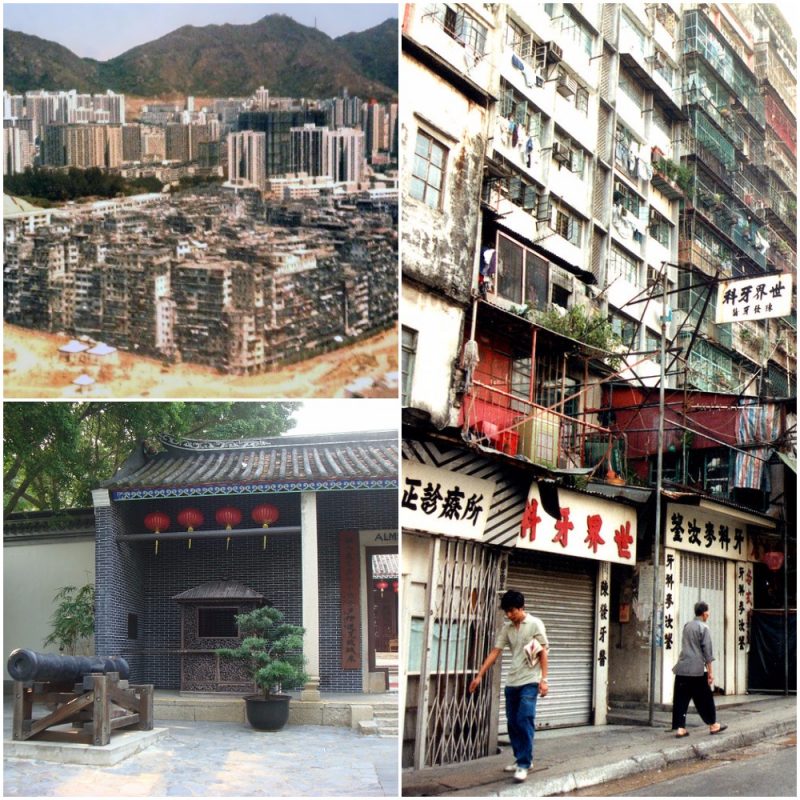The Kowloon Walled City was a huge ungoverned settlement that was a part of Kowloon City, Hong Kong.
Its absurd architecture, overpopulation, self-sufficiency, and the reign of drugs and crime became an inspiration to many sci-fi fiction writers and filmmakers. In fact, the lower levels of the futuristic Los Angeles in Ridley Scott’s Blade Runner were based on the crammed neon-lit alleys of the Kowloon Walled City.
The settlement was originally a Chinese military fort, but when Britain claimed the New Territories in 1898 it became an enclave. The population of Kowloon Walled City spiked during the World War II, when Hong Kong was occupied by Japanese forces. After the war, the settlement became a world of its own, controlled by powerful local gangs known as Triads.
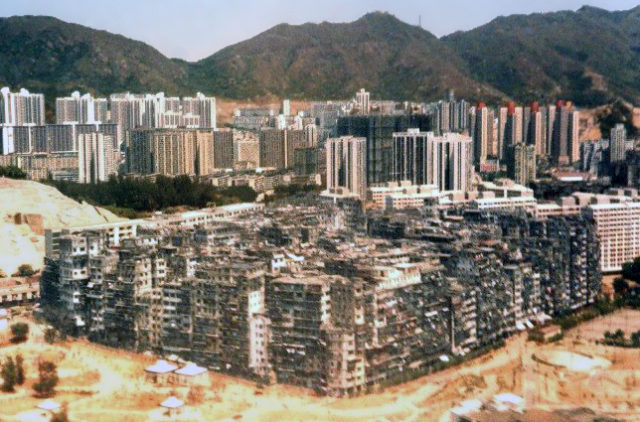
Aside from a few raids from the Hong Kong Police, the government had no interest in the Kowloon Walled City. Until the 1970s, the police dared to venture into the settlement only in large groups. The settlement became a haven for drugs and crime; Triad groups named 14K and Sun Yee On held many brothels, strip clubs, gambling parlors, and opium dens. Since there were no government regulations, various other illegal businesses flourished, including pharmacies, unlicensed dental clinics, food markets, and weapon shops.
At the beginning of the 1980s, Kowloon Walled City housed approximately 33,000 inhabitants on a surface smaller than a square mile. New buildings were built on top of the old ones, and the settlement was so densely populated that people used rooftops as places for social gatherings.
Inner streets were illuminated by fluorescent neon lights, as sunlight rarely reached the lower levels of the settlement. Only eight municipal pipes provided water to the entire settlement, and makeshift pipes were constructed all over the area.
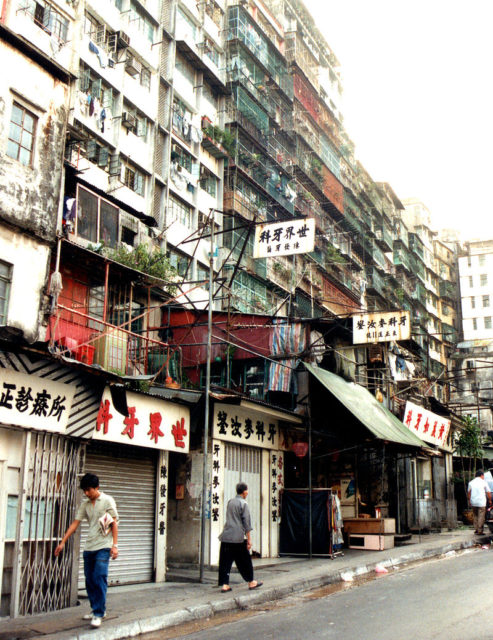
The drainage was improvised, so the lower levels were wet and damaged from years of poor maintenance. Still, many families within the settlement led peaceful and normal lives: elderly citizens were provided with free food and necessities, children were encouraged to go to school, and various game rooms and small cinemas offered all kinds of entertainment.
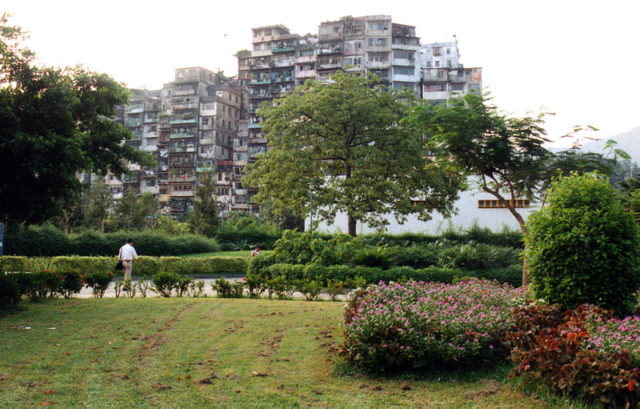
In the mid-1980s, the crime rate diminished, but both the British and the Chinese governments found the Walled City to be increasingly intolerable because of the awful quality of life and dangerous living conditions. The demolition of Kowloon Walled City was finally announced in 1987, to the horror of many of its inhabitants. The settlement was completely demolished in 1993, and a park was constructed in its place.
The only buildings left standing after the demolition of the infamous Kowloon Walled City were historical buildings built way before the settlements itself: several yamen, ancient administrative offices from imperial China.
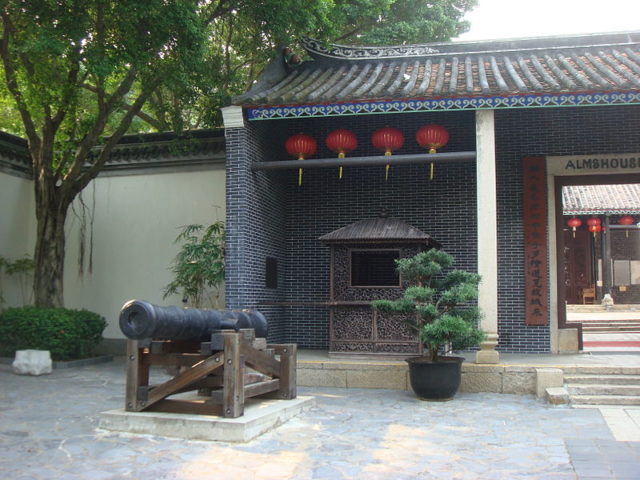
Although the settlement was completely demolished, its influence is still huge.
Read another story from us: The bizarre history of Colombia’s “Cocaine Hippos”
Many historical accounts compare it to the famous secluded and self-sufficient pirate havens, and many artists found inspiration in its narrow neon-lit streets.
